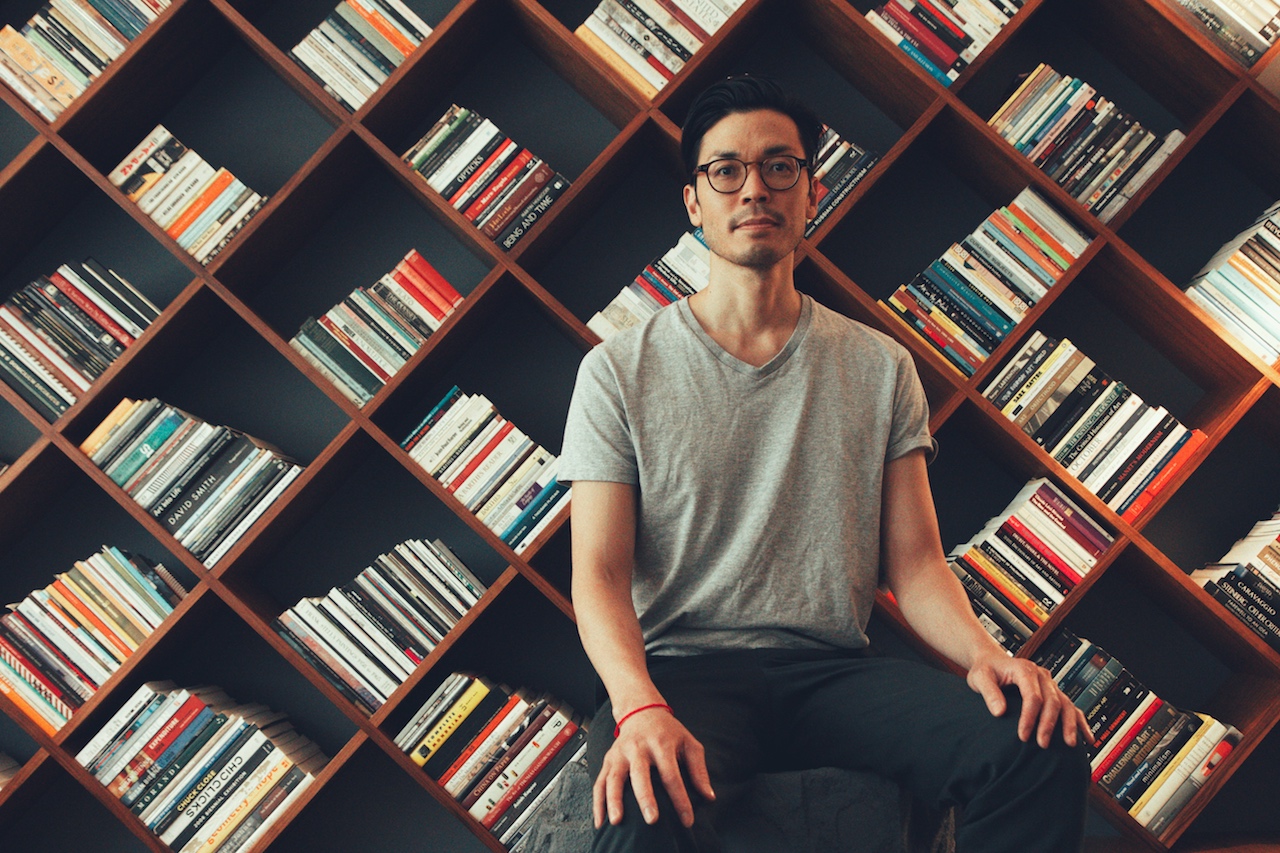
A new exhibit at the Bronx Museum focuses on the “in-betweenness” of an immigrant artist
Christopher K. Ho didn’t start referring to himself as an Asian artist until after the presidential election of 2016.
“My first reaction was to participate in long-distance nationalism, to say ‘I’m not really American,’” says Ho, 44, of his response to the surge of white nationalism following the election of Donald Trump. “I’m actually Chinese. I live here, but if you’re going to claim America as yours, then I also have this home country.”
Ho’s newest solo exhibit at the Bronx Museum of the Arts, Aloha to the World from the Don Ho Terrace, was born as a meditation on these feelings, and now will also serve as his farewell.
Ho immigrated to the U.S. from Hong Kong at 4-years-old, and went on to receive four degrees: two undergraduate degrees in architecture from Cornell University, and two master’s degrees in art history from Columbia University. He went on to become a teacher, a scholar, an artist-in-residence, and a curator.
On paper and in person, speaking eloquently about his upcoming show from his spacious, impeccably decorated loft across the street from Gramercy Park in Manhattan, Ho says he is very much representative of the American Dream.
But America, he feels, has no dreams left for him.
“This old idea of assimilation—the idea that if you work really hard, you can become a part of the mainstream—was foreclosed in 2016,” says Ho. “It really left me rootless, which is to say without a nation or without a home.”
And so he’s chosen to move back to his birthplace of Hong Kong, a place where he hopes he can finally belong.
Aloha to the World from the Don Ho Terrace is an aggressive “goodbye and good luck” of sorts (the song “So Long, and Thanks for the All the Fish,” from The Hitchhikers Guide to the Galaxy will be playing throughout the exhibit), inviting viewers to explore Ho’s “embodied reality” as a global citizen.
In discussing his starting point for the show, Ho recalled his perception of the art world shifting from site-specific art to autobiographical art. He decided to explore his own story, and then worked to discover how best to communicate his lived experience to the world.
“For me, success is for this exhibit to be conceptually rigorous but also formally coherent,” says Ho. “I think it’s more important for art to be timely rather than timeless. I want this show to bear the marks of 2018.”
Reflecting on his own journeys between Hong Kong and the U.S., Ho became interested in exploring “sites of transnationalism,” or “centers of in-between-ness”: places like airplanes, hotels, financial institutions that are “enclaves of transnational people.” That was when he decided to bring Hawaii to the Bronx.
The exhibit’s namesake, Don Ho, is a mixed-race Hawaiian singer and veteran, famous for singing to American veterans: “He’s an amalgamation of everything I was thinking about,” says Ho.
The show, organized by Antonio Sergio Bessa, Ho’s longtime colleague and the director of curatorial and education programs at the Bronx Museum, will reshape the museum’s enclosed balcony into the “Don Ho Terrace”: an imagined entryway mimicking the grand entrance of the former Hotel Miramar, a Hong Kong-owned, Waikiki-based hotel that was a frequent re-fueling stopover for Ho’s family.
The Miramar Hotel was interesting, explained Ho, because it “performed Chinese-ness”—things like serving guests in bamboo cups—and the International marketplace next door to it “performed Hawaiian-ness.”
“Cultural appropriation and cultural stereotyping are often presented as bad writ large, and to some extent I can get behind this,” says Ho, “But looking at institutions like the Hotel Miramar, or even a local place like the international marketplace I realized that self-stereotyping could be a way for people who don’t feel a part of things, immigrants, could also self-perform their ethnicity in order to communicate or bridge.”
Through a highly detailed remaking of the Miramar’s grand entrance, and in expertly curating a number of found objects, family photos and sound, Ho hopes to impart for the viewing public his feelings of “in-between-ness,” and to invite visitors to explore their own.
When asked about his feelings about leaving New York for a new country and a new art scene, Ho responds with a smile:
“I’m tired,” he says, with a laugh, “I’m middle-aged and mid-career. I’m ready to be a part of the majority.”
Aloha to the World at the Don Ho Terrace will be on display at the Bronx Museum of the Arts through next January 6.

